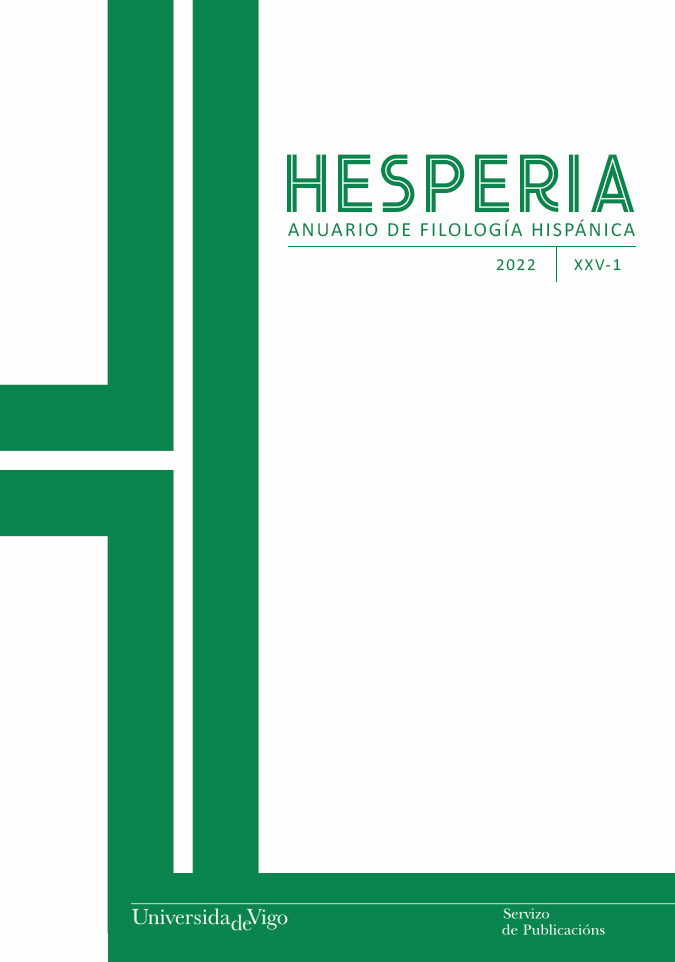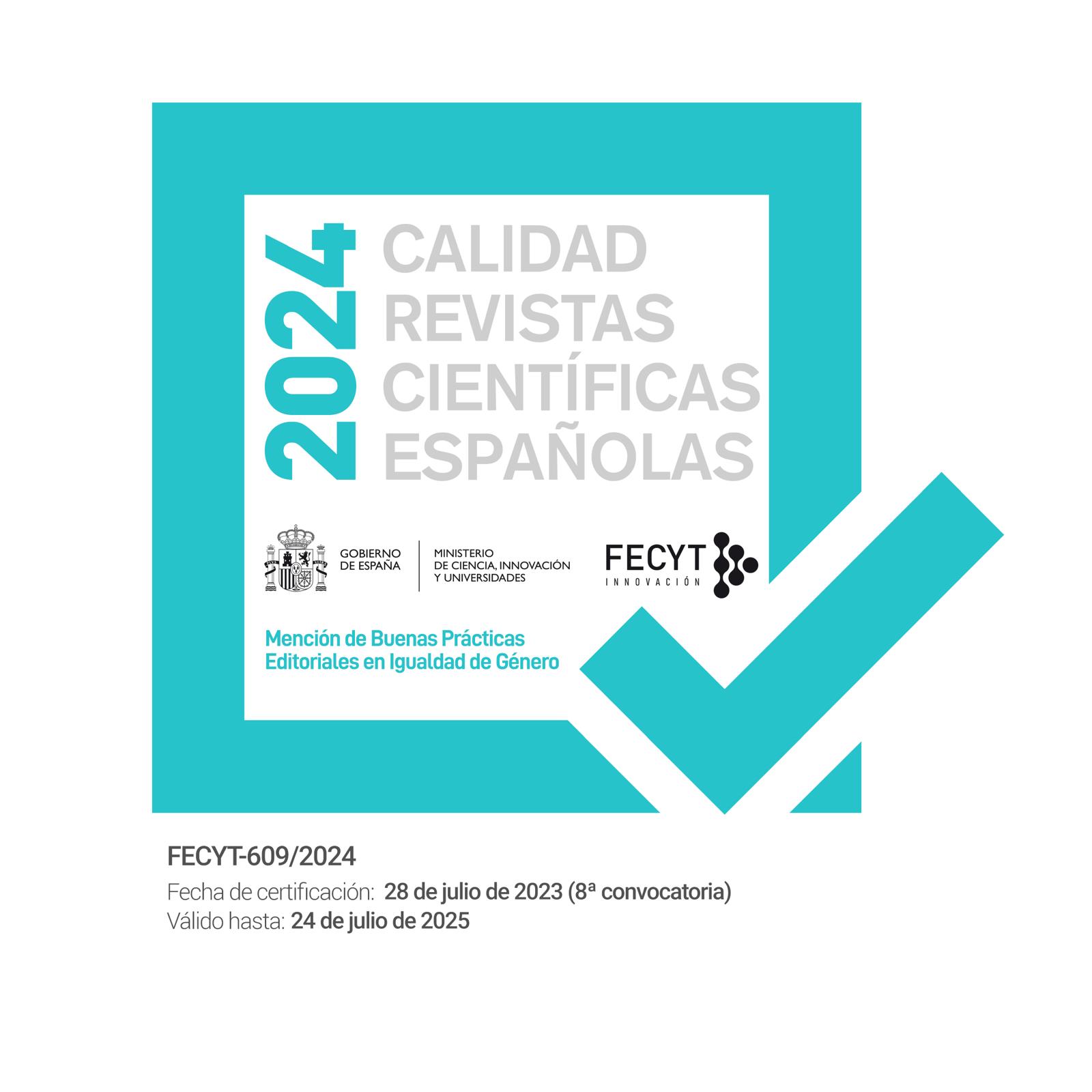MORFOLOGÍA DERIVATIVA Y EXPRESIÓN DE LA APROXIMACIÓN EN ESPAÑOL: EL CASO DE -OIDE
DOI:
https://doi.org/10.35869/hafh.v25i1.3961Palabras clave:
Lengua española, morfología derivativa, aproximación, sufijo -oideResumo
Este artículo tiene un objetivo doble: por una parte, presentar brevemente algunos de los procedimientos derivativos con los que cuenta la morfología del español para la expresión de la aproximación en sentido amplio, incluyendo tanto la no prototipicidad como la no autenticidad o falsedad; por otra, describir el caso concreto del sufijo -oide a partir de datos de neologismos recientes con el fin de mostrar cómo se relacionan en este sufijo los conceptos de categorización, aproximación y evaluación, de forma similar a lo que sucede en el caso de otros sufijos de origen culto como -áceo.
Descargas
Descargas
Publicada
2022-10-21
Cómo citar
Felíu Arquiola, E. (2022). MORFOLOGÍA DERIVATIVA Y EXPRESIÓN DE LA APROXIMACIÓN EN ESPAÑOL: EL CASO DE -OIDE. Hesperia: Anuario De Filología Hispánica, 25(1). https://doi.org/10.35869/hafh.v25i1.3961
Número
Sección
Artículos















